Specifications:
- Power Output into 8 ohms: 100 watts Power Output into 4 ohms: 160 watts Rated Power Band: 20Hz – 20kHz
- Total Harmonic Distortion: 0.005% from 20Hz to 20kHz
- Damping Factor: 200 at 8 ohms; 100 at 4 ohms
- Input Impedance: High Level:20K ohms; Phono: 47k ohms
- Main output impedance: 50 ohms Dimensions (HxWxD): 7-5/8” x 17-1/2” x 22” Weight: 37lbs net; 55lbs boxed
- Price: $4000
There is something to be said for reliability, longevity, and consistency. These uncommon attributes are coveted by nearly every respectable company in any given marketplace. This scarcity also means that those virtues are realized by only a select few. In the micro-market of high end audio, McIntosh Laboratory stands as one of those few, bringing forth and continuing a rich heritage that has remained unfettered by time.
Crafting high performance electronics since before my father was in diapers, McIntosh has established a reputation that even non audiophile muggle’s are familiar with – a feat that virtually no one company in the industry can lay clam to. Although McIntosh is often regarded as sourcing some of the best audio components in the business – they are also known for being, well… expensive.
McIntosh MA6300 review
Enter the MA6300
Introduced in 2006, the MA6300 is a full featured integrated amplifier designed to serve as the most affordable entry point into the McIntosh line. From its iconic big blue meters to the aluminum side bars flanking each side of the unit – the MA6300 maintains the superb trademark looks and feel that McIntosh has become so well known for. Designed with versatility in mind, the MA6300 houses a laundry list of features beneath its surprisingly large chassis. These features include a MM phono stage, a headphone section, data ports for home automation use, six single ended RCA inputs, a balanced XLR input, a tape in/out, a main in/out along with a first rate remote control. Simply put, the MA6300 is engineered to give the modern day audio enthusiast a foundation to build a system upon and around.
The MA6300 is also engineered to give consistent and reliable performance through decades of use. To achieve these goals, McIntosh relies on their innovative circuits, tight quality control, and smart choices in design. One of those smart implementations of design is placing the text along the backside of the front glass panel so that the ink never fades or ages. In the MA6300, McIntosh eliminates maintenance woes all together by replacing the old traditional light bulbs used to illuminate the power meters with long lasting LED’s. Practically everything inside the MA6300, from the circuit board to its custom wound RCore transformer, is designed and built in-house. Yet for all of these attributes, the real mojo behind the MA6300 is its many patented technologies designed to maximize safe, efficient, and cool operation. Some of these technologies include;
- R-Core Transformer: A custom wound iron core transformer designed to operate at low temperature and emit very little noise into the signal path.
- ThermalTrakTM Technology: A series of resistors that adjust bias to ensure efficient and cool operation even through varying voltages.
- Power Guard: This circuit prevents the amplifier from being over driven. When activated, the power guard lights located at the front of the unit illuminate – signaling for you to turn the volume down. The circuit will not allow an increase in output while Power Guard is enabled.
- Sentry Monitor: A circuit that activates whenever a short is detected.
Top all of this off with an oversized shipping carton and a well thought out and beautifully illustrated user manual, and you’ve got a complete package that few can challenge at this price point.
First Impressions
Cutting right to the chase; the MA6300 is about as straight forward and as problem free as they come. The unit is literally plug and play – with no warm up time necessary to attain optimal playback performance. What’s even more refreshing is a lack of electrical and operational noise. I’ve found that many integrated amplifiers in this class are prone to producing 60Hz hums and are generally quite noisy across the audible range. Not so with the MA6300. Throughout the entire review, I was impressed with how quiet this integrated is. I was also impressed by how easy the front panel is to read. Those of us that are not blessed with great eyesight will appreciate the well lit front panel display, which makes for easy navigation even in a pitch black room. From power up to power down, the MA6300’s simple user interface makes day to day operation easy and stress free.
The Sound Part 1: The Yin
The MA6300 is all about delivering a full and lush presentation that is evenly applied from top to bottom. This intelligent blend of neutrality and rich color meld together to form what is, in my opinion, the MA6300’s front running attribute; the ability to deliver satisfactory hi-fi goods without massacring less than perfect recordings. Instead of adhering to ‘tell it like it is’ tenets covered by so many audiophiles, the MA6300 is more of a music lovers piece – focused on preserving tonal consistency and musical flow.
Personally, this comes as a breath of fresh air. Like most of you, my music collection is divvied up between a number of stellar audiophile approved discs and a whole lot more mediocre discs. Unfortunately, many high end components I come across make the latter sound like crud. While the MA6300 makes no attempt to mask sub par recordings, it does make them bearable enough to enjoy. Imagine being able to rock out to Linkin Park or to The Smashing Pumpkins without the thought of hi-fi parameters. That’s exactly what the MA6300 is all about.
Helping to give the sound body and scale is 100 big watts of transistor love. This power capacity ensures that the MA6300 is fully capable of driving a wide array of loudspeakers. While it’s important to note that this amp is not a drive-anything beast like my H2O Signature 100, it nonetheless has enough current on tap to easily drive difficult loads from speakers like the 4 ohm, 85db efficient Totem Acoustic Mani-2 Signature and the 4-8ohm, 82db efficient Mark and Daniel Maximus-Mini, and can do so without running hot – even in long durations of high output. This horsepower is complimented by solid dynamic range that enables the MA6300 to flex some muscle when necessary.
That said; it would be a mistake to write off the MA6300 as an amp that’s all brawn and no finesse. Even at low volumes, the integrated is able to deliver a very vivid and clear presentation, something that I personally enjoy due to my preference of listening late at night. On top of this, the MA6300 is an ace at throwing a very wide and deep soundstage. While it’s true that most components in this range possess great imaging capabilities, the MA6300 sports the uncommon ability of recreating good soundstage height. This additional ‘size’ helps give the music a more authentic sense of scale, or as some would call it, the “live in your listening room” effect.
No matter what room, speakers, or piece of music I threw at the MA6300, its character remained steadfast. The treble, although not the most detailed or smoothest on the block, nonetheless remained exceptionally clean, clear, and easy to listen to. Like many transistor amplifiers, the high end tends to focus a bit more on leading edge transients, such as the initial strike of a cymbal, certain inflictions of a vocalist, or even guitar plucks.
The midrange combines the virtues of clarity and subtle organic bloom. Although I interpret this open presentation as something more neutral, I certainly cannot fault anyone who would initially classify the sound as ‘warm’. There is a sense of body to the MA6300’s midrange that is very noticeable with vocals and woodwind instruments in particular. This is especially enjoyable with acoustic guitar tracks, where the high’s focus on bite and the mid’s focus on resonance meld together to form a highly pleasing and convincing presentation.
Deep and powerful, the full sounding bass on the MA6300 provides the foundation that supports the entire structure and harmonic relationship between the midrange and highs. Throwing in Nine Heavens, the latest album from Niyaz – I was surprised at the array of bass notes and textures that the MA6300 could accurately display. Low drum thwacks hit low and hard. Though the bass on the MA6300 cannot be considered the pinnacle of detail or agility – it nonetheless possess a lot of raw power all the while managing to separate notes well and allow each instrument its own distinct space.
Performance: The Yang
As mentioned at the beginning of this review, the MA6300 adheres less to ‘tell it like it is’ tenets that audiophiles covet. Translated; it’s not the most refined sounding amplifier in its class. This isn’t to say that the MA6300 measures poorly or is unrefined. It simply means that there are other products in its class that will sound more resolute, or will be better at doing ‘this’ or ‘that’. However, if you are the kind of listener that desires a versatile piece and values tonal consistency along with top notch build quality over hi-fi spectacular – you shouldn’t find the MA6300 lacking in any way. So, bearing the latter to mind, I have no complaints to file against the MA6300’s sonic performance. Instead, the only complaints I have to register are more functional in nature.
First, I was disappointed to learn that the brightness of the front panel, particularly the blue power meters, cannot be adjusted. The problem is that the MA6300 illuminates so vividly that it can draw way too much attention to itself in a dark room.
Secondly, the MA6300 is not a small piece. Measuring at a whopping 22” in depth, this integrated barely fits onto contemporary sized audio racks – and may be flat out too deep for some applications.
Recommendations:
Provided you’ve got the counter space, the good news is that the MA6300’s cool operation allows for a number of placement options. Add to this cool operation a very silent back-round, great power delivery, and sound quality, and you’ve got a piece that can bode well with a whole multitude of loudspeakers. So, unless you intend on matching this integrated with components of inherent richness or warmth, or extreme difficult loads (Apogee Scintilla), you shouldn’t fret over component synergy.
Most integrated amplifiers in this class bridge the main input / output section with a cheap set of jumpers. It’s always a good idea to replace those stock jumper’s with a good pair of interconnects. Even a set of 0.5M RCA interconnects from Blue Jeans Cable should yield notable sonic improvements over the stock jumpers.
Those of you looking to run a sub will be disappointed to learn that there is no designated subwoofer output on the MA6300. Fear not, however, there is an easy way to integrate your sub. All you have to do is run a Y-Adaptor cable between the main in/out and away you go. Considering that the jumpers should be replaced anyway, doing this would be akin to killing two birds with one stone.
Lastly, if you are anything like me – and find yourself listening late at night – I would recommend using an ambient light somewhere in the room to help prevent your eyes from focusing on the well lit MA6300. The less attention you devote towards visual stimuli while listening, the better.
M-O-O-N that spells McIntosh
At the end of the day, $4,000 is a lot of change to plunk down on an audio toy. Obviously, this piece was never designed to attract the bargain shopper, nor by contrast, was it built to attract the deep pocketed audiophile looking for the best in what high end audio has to offer. Instead, the MA6300 was introduced as a high performance, yet affordable piece worthy of wearing the McIntosh badge. Although there is no shortage of competitors in the integrated market at this price class, there are only a few that will even begin to approach the luxuries that the MA6300 offers.
Few electronic manufacturers can lay claim to having their products built entirely in house, especially at this price point. Yet when you buy a MA6300, not only do you get in-house build, you can rest well knowing that every single part inside its chassis was designed, built, and assembled specifically for the MA6300. Thinking far into the future, McIntosh inventories enough of these parts to ensure that the amplifier will remain serviceable long after many other businesses have faded into obscurity. Wrap all of what’s been said into a look that, when placed on any audio rack, instills a sense of unflappable confidence, and you’ve got something that’s hard not to consider a good value.
So, whether you are looking for an affordable way to step into McIntosh, or are flat out tired of playing the equipment swap merry-go-round, the MA6300 stands as a wonderful solution. The only danger here is that this piece could very well act as a gateway drug. After you get a hit – there’s a good chance that you’ll want to move up the McIntosh ladder. Very highly recommended.
from affordableaudio, By Sean Fowler
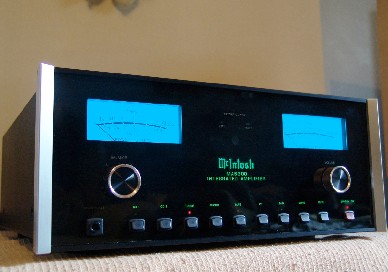
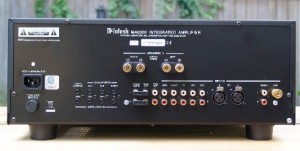
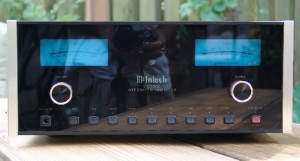
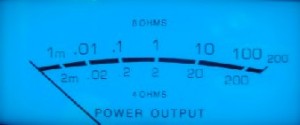
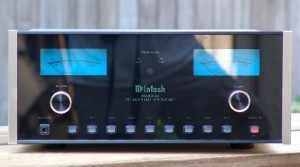
I enjoyed your thoughts about the McIntosh, but I really hate the white text on black background. It’s extremely difficult to read.